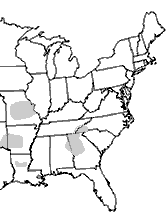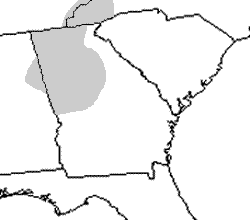Southern Redback Salamander (Plethodon serratus)



Photos by J.D. Willson unless otherwise noted
| Description: The Southern Redbacked Salamander (Plethodon serratus) is a small woodland salamander and ranges from 3 – 4 in (8-10.5 cm) long. Its body is mainly dark gray or black with a light middorsal stripe down the back and on to the tail. The stripe may be orange or reddish and is widest above each costal groove. The name serratus is derived from the saw-toothed manner in which the middorsal stripe meets the dark area on the sides. It also appears in a “leadback” variation, which is dark and unpatterned. This species looks very similar to the Webster’s Salamander (Plethodon websteri). In most areas, these species can be distinguished by range, however, where their ranges overlap in western Georgia, P. serratus has a straighter dorsal stripe (but will with serrated edges), while the stripe of P. websteri is more jagged.
Range and Habitat: Southern Redback Salamanders are found in disjunct populations found in the mountains of west-central Arkansas, southeastern Oklahoma, central and southeastern Missouri, and the the northwestern third of Georgia. A salamander of forested areas, the redback can be found hiding beneath rocks, clumps of moss, and decaying logs where the substrate remains moist. During the dry season, they can be found near seeps and springs. Habits: A woodland salamander, eggs are normally laid in damp logs, moss, or other moist substrates of the same consistency. There is no aquatic larval stage for this salamander and complete development occurs within the egg. Adults feed on small arthropods and mollusks. Conservation Status: Plethodon serratus is not threatened in Georgia, but due to the disjunct populations may be state-listed as rare in places like Illinois and South Carolina that lie on the fringe of their range. Pertinent Reference: Account Author: Geoffrey Bailey, University of Georgia – edited by J.D. Willson |
